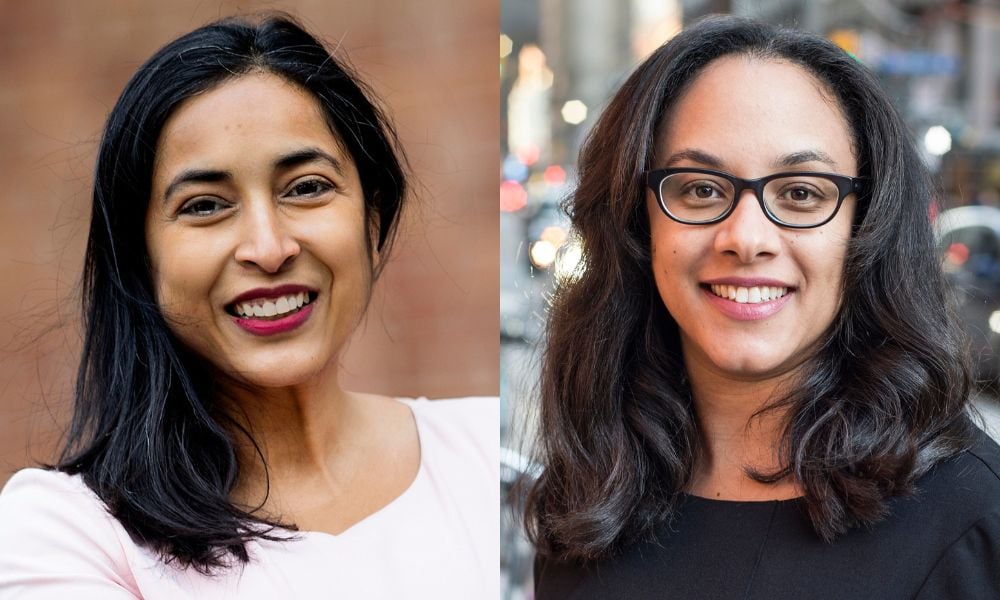
Deep learning models use data sets generated by scraping billions of images from the web

New text-to-image generator tools are among the proliferating artificial intelligence technologies raising legal questions for intellectual property lawyers.
DALL-E and Midjourney are deep learning models using artificial intelligence to create images based on user text prompts.
These tools accumulate data sets by combing through billions of web images. They correlate the text prompt with text captions attached to images, composing a new image. According to its website, DALL-E creates “original, realistic images and art from a text description” and can “combine concepts, attributes, and styles.” OpenAI, the company behind ChatGPT, also developed DALL-E. Midjourney is developed and run by an independent research lab, Midjourney, Inc.
DALL-E and Midjourney essentially raise the same problem society has dealt with since the internet became widely used, says Lorraine Fleck, senior lawyer and registered trademark agent at Caravel Law. “People think, because some image or information’s on the internet, it's free for anybody to use.”
The tools raise legal issues related to the copyright and moral rights attached to images and other information scraped from the internet. Copyright is the right to reproduce a work or have others reproduce it under license. Moral rights concern the right to be associated or not be associated with a work and the right to the integrity of the work, says Fleck, whose expertise includes advertising and marketing law, IT, intellectual property, privacy, and data security.
“I think there's going to be a lot of potential moral rights claims if the resulting image looks like the original works that have gone into it, and the photographers or creators object to how that work appears.”
Moral rights are also engaged when a work involves something controversial or political. Copyright protects creative works for the life of the author plus 70 years.
Midjourney was involved in one of the first US court cases involving the scope of copyright protection for AI-produced works. The US Copyright Office ruled that the Midjourney-produced images appearing in a graphic novel were not copyrightable because they were not the product of human authorship. The graphic novel’s author, Kris Kashtanova, was granted copyright protection for the aspects of the book they wrote and arranged, but not the AI-generated illustration. Kashtanova told Reuters they will continue to advocate their position that the images are a “direct expression of my creativity and therefore copyrightable.”
Whether the fruits of AI qualify for IP protection is a burgeoning legal issue, says Fleck.
“There's been split decisions in some countries as to whether AI-created inventions qualify for patent protection. It’s not an issue that’s come up in Canada yet. But that potentially could be one.”
In another US case, a federal appeals court confirmed a lower-court ruling that an AI system called Device for the Autonomous Bootstrapping of Unified Sentience (DABUS) could not be named as the inventor in a patent. In Thaler v. Vidal, the court found “overwhelming evidence that Congress intended to limit the definition of ‘inventor’ to natural persons.”
Internationally, DABUS’s inventor Stephen Thaler has also been stymied at the UK Appeals Court, European Patent Office, Federal Court of Australia, and the German Federal Patent Court, which all reject patent applications not listing a human inventor. Thaler was successful in South Africa, though The Brookings Institution article notes the country differs from the others in lacking a “‘substantive patent examination system’ through which the government evaluates the merits of a patent application before granting a patent.” In South Africa, if the forms and fees are in order, the patent is “summarily” granted, said the article.
For both DALL-E and Midjourney, the user owns the text prompt with which they produce their created image, says Monica Goyal, director of legal innovation at Caravel Law. For DALL-E, but not Midjourney, the user also owns the outputted image. Midjourney requires the user to pay a subscription fee to commercialize the output. Marketplaces are emerging where people are selling their prompts, she says.
Midjourney recently announced that it would end free access to its tool because of “the rapid increase in viral deep fakes” using its technology. The company cited as examples the images circulating of Pope Francis in a white puffy jacket and Former US president Donald Trump being arrested by a swarm of police officers.
On June 15, Goyal will appear at Canadian Lawyer’s LegalTech Summit on June 15. She will be on the 9:10-am-EST panel, “Emerging technologies and automated workflow in the legal industry.”